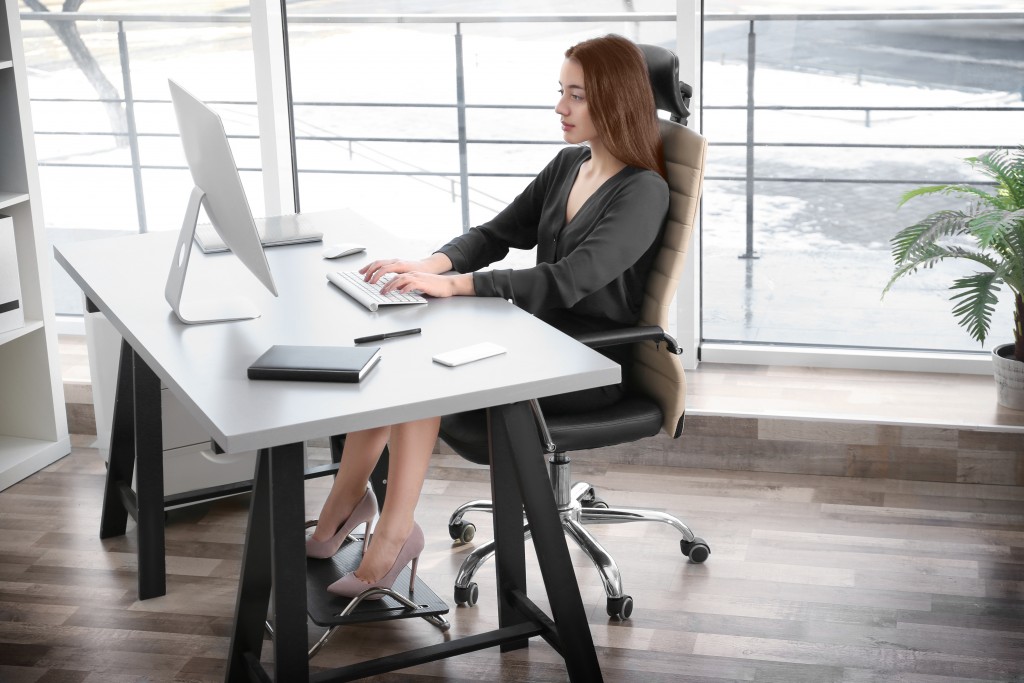Sitting at a desk all day can be bad for everyone, but when you have scoliosis, the effects can be a lot worse. It’s easy to forget proper posture when you’re focused on work, more so if your office tools are not oriented properly to ensure a good sitting position. This bad habit can lead to worsening of scoliosis, which can manifest in severe back pain and further exacerbation of spine curvature.
Scoliosis is a condition that requires long-term management, as well as adequate scoliosis treatment for adults. It is not that difficult to manage scoliosis when you have an office job; you just have to find ways to keep yourself in a good sitting position throughout the day.
Here are some of the best ways to do that:
1. Get an ergonomic office chair
Unlike a regular office chair, an ergonomic chair provides proper lumbar support so that the spine is in the correct position, which is especially important for people with scoliosis. Bring in your own ergonomic chair to the office, if possible, to help you maintain proper posture throughout the workday. Alternatively, buy a back support device or seat cushions to align your spine properly and reduce back pain.
2. Adjust your desk
If you have to hunch at your desk to type properly, it’s at the wrong height. Adjust your desk so that your forearms and wrists can rest comfortably on your chair’s armrests (or on the desk itself, if you don’t have armrests) and your knees have enough clearance underneath. If the desk cannot be adjusted and is too low, raise it by placing blocks underneath the legs. If the desk is too high, raise your chair and use a footrest to keep your feet flat, if necessary.
3. Keep things within reach
To minimize reaching throughout the workday, keep essential items (phone, pen, paper, stapler, etc.) within arm’s reach. If you have to reach for something that is far from your body, stand up instead of stretching your body and possibly causing unnecessary strain to it.
4. Wear a back brace
For adults with scoliosis, wearing a back brace can help reduce severe pain and provide support to the back while working at a desk. There are many types of back braces with varying indications, levels of rigidity, and weight. Consult with your specialist to determine the right kind of back brace you should wear. If you are worried about how wearing a back brace can affect your professional image, ask your specialist for a more discrete model that can fit underneath your clothes.
5. Choose the right shoes
Shoes affect your posture, and in turn, affect your scoliosis. If you constantly wear stiletto heels or ballet flats with little to no support, you increase your risk of experiencing scoliosis-related pain.
The best way to avoid this problem is to wear shoes that fit the natural arch of your feet and provide good support to your entire body. Orthopedic shoes are excellent choices, but if they don’t fit the office dress code (or you simply don’t like the way they look), you can ask a specialist for a custom pair that doesn’t look too much like orthopedic shoes. In addition to that, avoid wearing shoes with heels as much as possible–save them for special occasions.
6. Walk around

Sitting for long periods of time can cause unnecessary strain to your back, which can be very painful when you have scoliosis. Walk around at least once every hour (or half an hour, if you can manage) to stretch your muscles and alleviate the pressure from your spine.
Aside from helping your back ‘breathe’, taking short breaks from your desk will also help you avoid eye strain.
7. Re-define your lunch hours
You already spend most of the day sitting, do something different during lunch, like standing while eating or taking a walk around the block. If your office is near your gym or has its own fitness center in the building, squeeze in a quick exercise routine for scoliosis. Your specialist will have likely recommended stretches and workouts that you can do to help keep the pain at bay and prevent the worsening of your condition.
8. Listen to your body
Take a break when you need to. Your work is not as important as your health, especially if it’s causing you great pain. If you need to visit a doctor, ask your supervisor for a leave of absence right away.
Dealing with scoliosis when you work a desk job is not as daunting as it seems. With these strategies and tips, you can help prevent scoliosis-related pain and, in turn, keep yourself motivated and productive at work.







